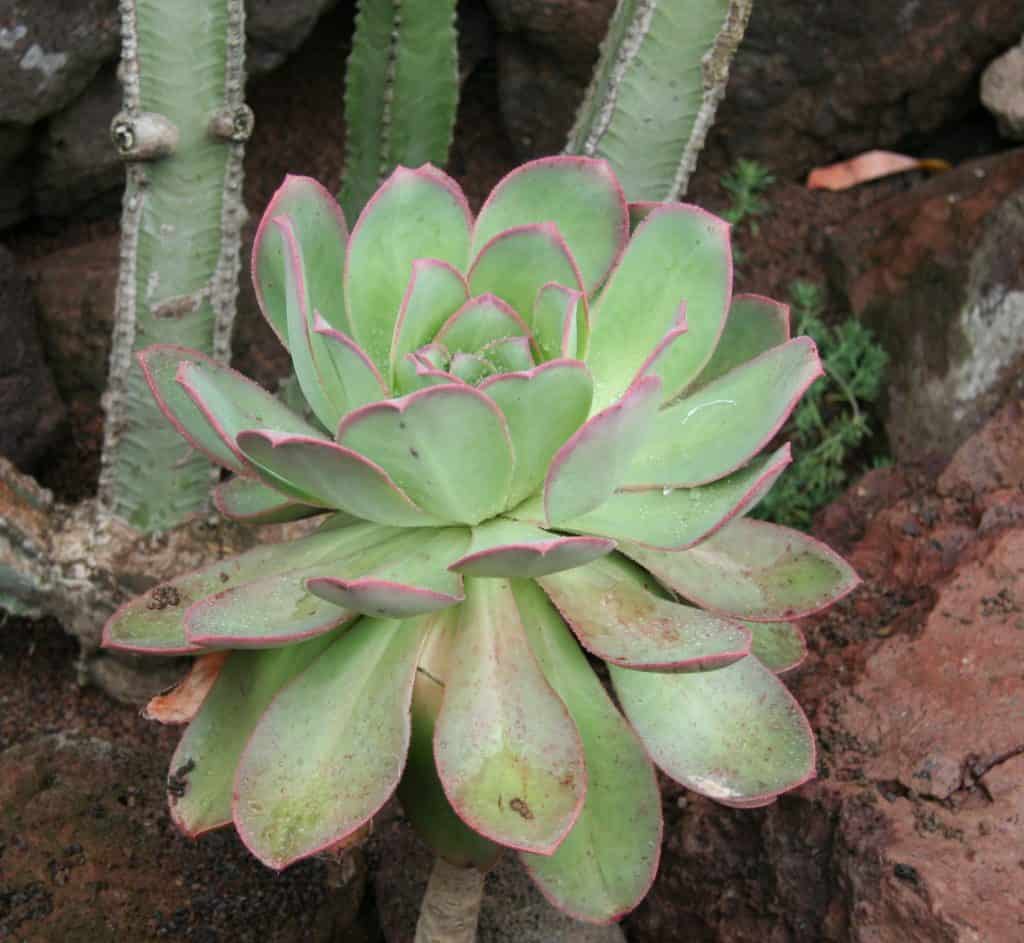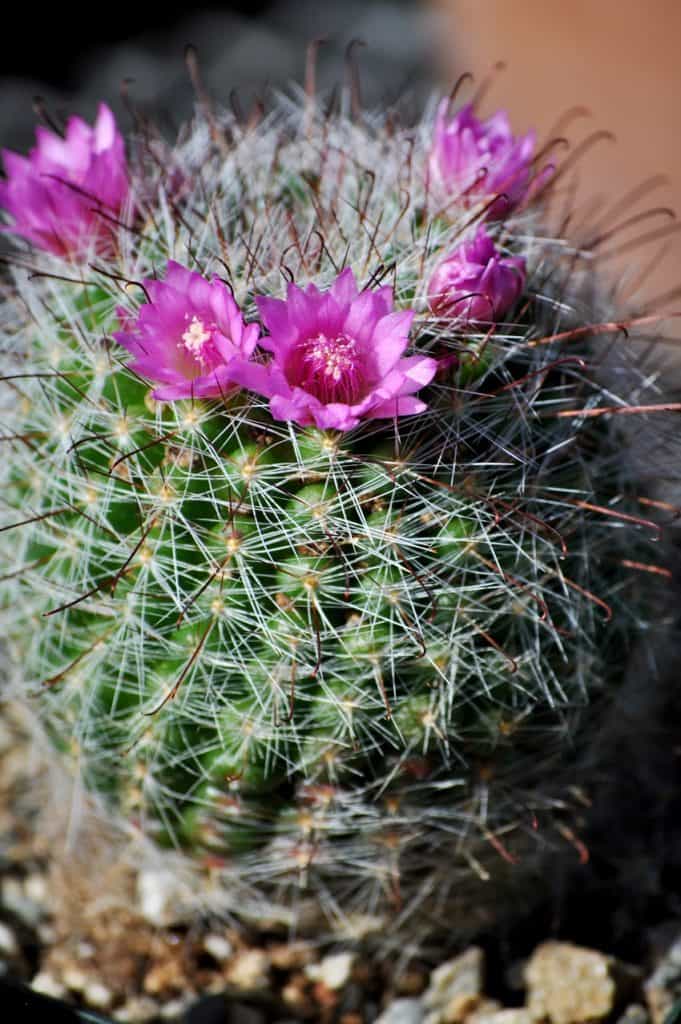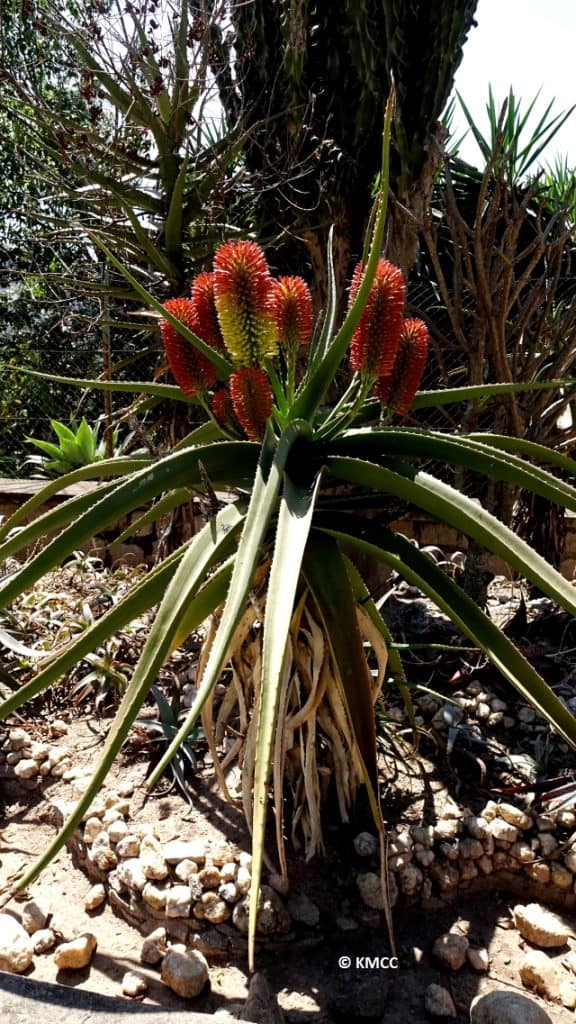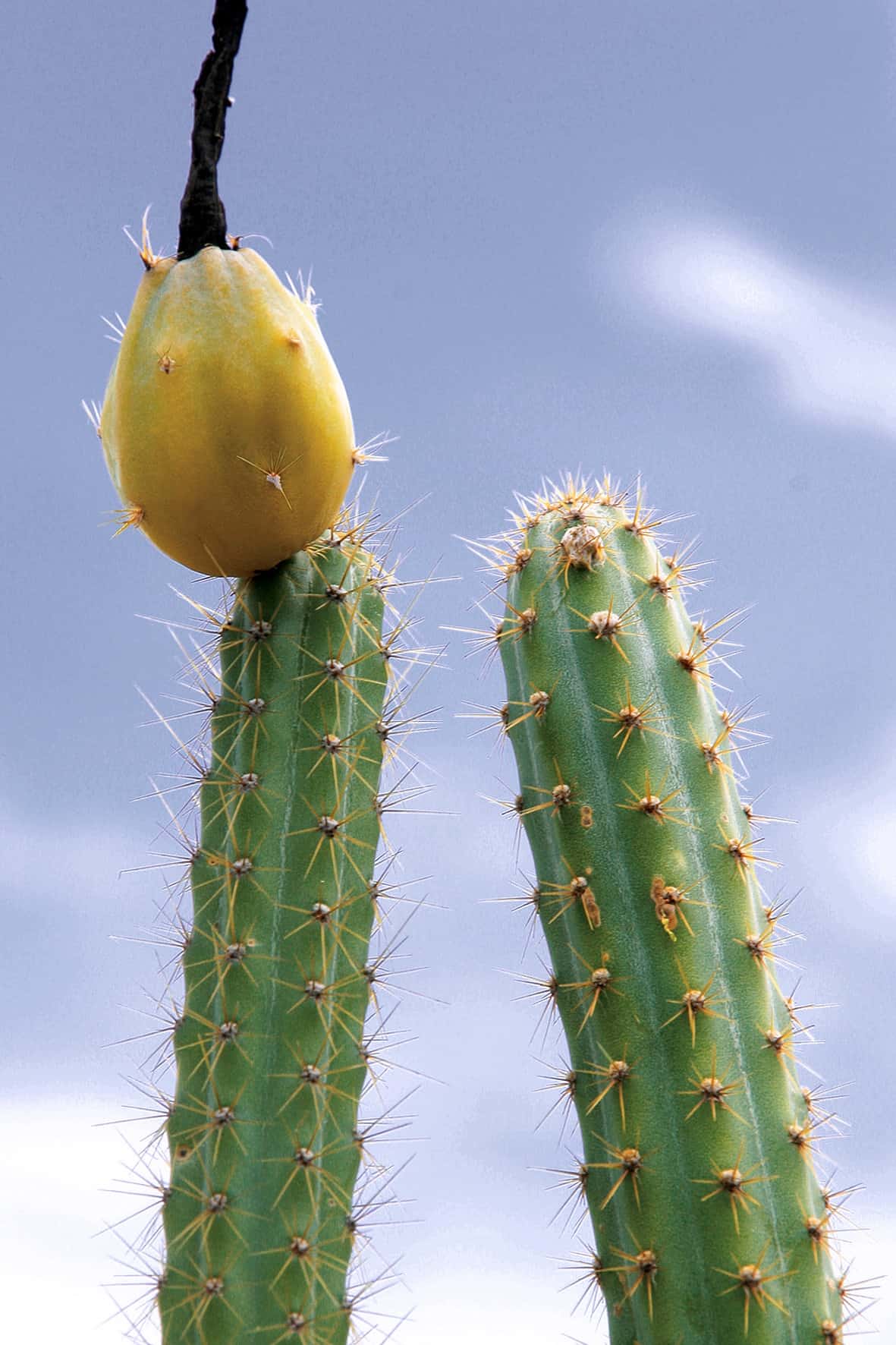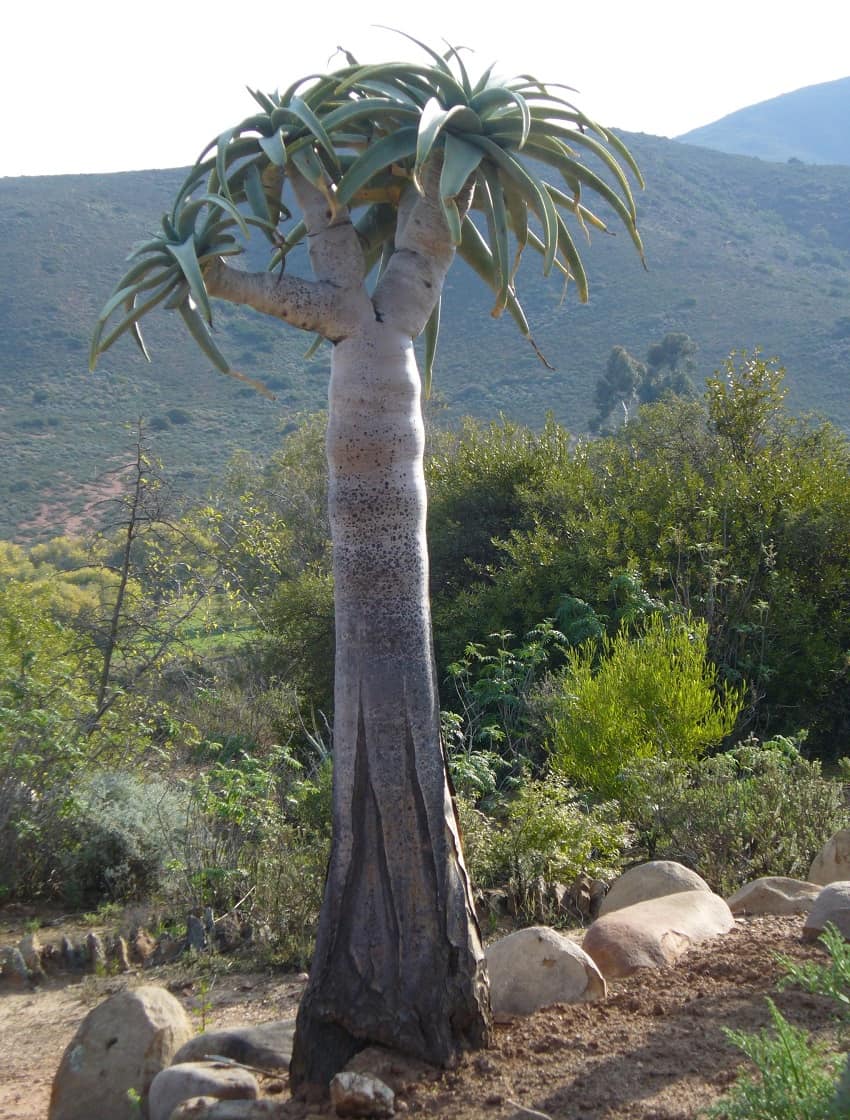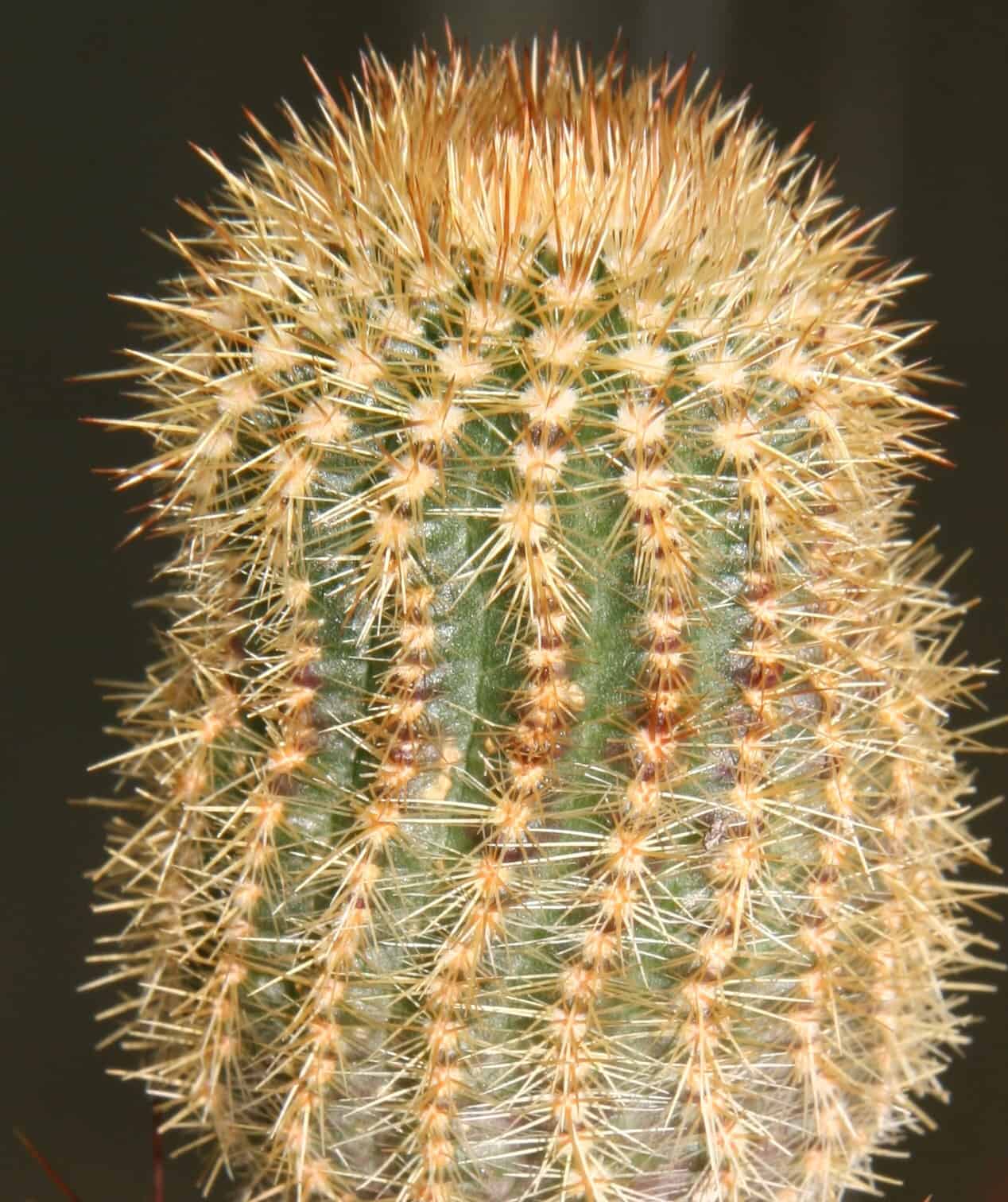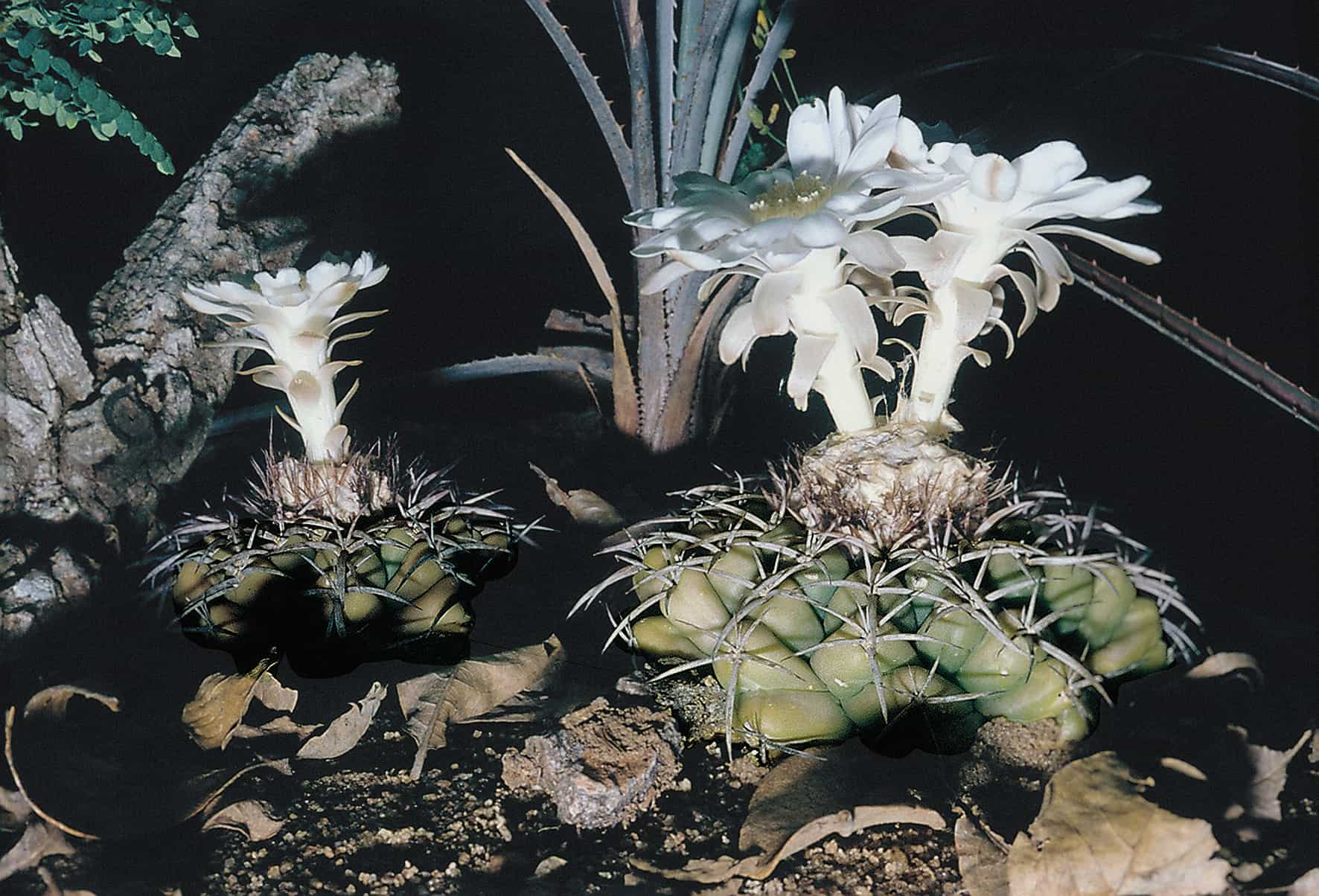In the past few years, collecting and growing succulents has become increasingly popular around the world. Unfortunately, this renewed interest in the wide variety of plants has negatively impacted a number of succulent species in the wild. Many succulents, including the rare ones on this list, are illegally collected in the wild and sold to collectors around the world.
This has caused a number of succulents to become critically endangered in their wild habitats and some of the succulents on this list are very close to extinction. So while it may be nice to admire these rare succulents, be sure that any in your own collection were ethically sourced.
- Sand Dollar Cactus
- Salão
- Pelotilla de Chinamada
- Rose Pincushion Cactus
- Vahondrandra
- Estevesia alex-bragae
- Giant Quiver Tree
- Aichryson dumosum
- Parodia rechensis
- Discocactus subterraneo-proliferans
Location (Range): Texas, USA; and Tamaulipas and Nuevo León, Mexico
Scientific Name: Astrophytum asterias

photo source: Wikimedia Commons via Dr. David Midgley
The Sand Dollar Cactus (also called sea urchin cactus, star cactus, or star peyote) is a rare spineless cactus that is native to parts of Texas and Mexico. This cute little cactus is widely cultivated by succulent/cacti enthusiasts. The Sand Dollar Cactus has been a popular ornamental succulent since it was first collected in the mid-1800s.
However, this popularity makes the Sand Dollar Cactus vulnerable in the wild and the IUCN Red List reports that people from around the world often illegally remove the cactus from the wild and mail them home. The last update, from 2015, on the wild population numbers of the Sand Dollar Cactus estimated that there were only about 2,000 individual plants left. Conservationists discourage people from taking the Sand Dollar Cactus from the wild because it is actually quite easy to grow from seeds and cuttings.
Location (Range): Santo Antão, São Vicente and São Nicolau (Cape Verde Islands)
Scientific Name: Aeonium gorgoneum

photo source: Wikimedia Commons via Michael Wolf
The Aeonium gorgoneum, which is called Salão by the local population on the Cape Verde Islands, is a rare succulent that is vulnerable to over harvesting. Salão is often used in traditional medicine to treat coughs as well as other medical issues. According to the IUCN Red List, there are fewer than 1,000 Salão plants left in the wild.
The Salão grows on three of the Cape Verde Islands: Santo Antão, São Vicente and São Nicolau. Some of the areas on each island where the Salão grows are on protected land (Parque Natural de Moroços, Parque Natural Cova / Paul / Ribeira da Torre and Parque Natural de Monte Verde), but harvesting the Salão isn’t being well managed yet.
Location (Range): Tenerife, Canary Islands, Spain
Scientific Name: Monanthes wildpretii

photo source: IUCN Red List
The Pelotilla de Chinamada is a rare succulent that only grows on the island of Tenerife in the Canary Islands of Spain. Every single known Pelotilla de Chinamada grows in an area that is only about 1 km² (0.386 mi²) in size. In 2009, the population count of Pelotilla de Chinamada was reported as 593 individuals and 504 of those were mature plants.
Pelotilla de Chinamada grow tends to grow in fissures and crevices. It also often grows near other succulents from the Monanthes genus. The already small population of Pelotilla de Chinamada has been negatively affected by its proximity to a frequently traveled road. This has caused the Pelotilla de Chinamada’s habitat to degrade and the succulent is also vulnerable to being collected and sold as a rare plant.
Location (Range): San Miguel de Allende in Cañada Virgen, Guanajuato, Mexico
Scientific Name: Mammillaria zeilmanniana

photo source: Wikimedia Commons via The Greenery Nursery and Garden Shop
Although the Rose Pincushion Cactus is widely cultivated because of its beautiful crown of pink flowers, this succulent is rare and critically endangered in its natural habitat. Unfortunately, the Rose Pincushion Cactus’ popularity is its biggest downfall. Illegal collecting is one of the main reasons that the wild Rose Pincushion Cactus population is declining.
To make matters even worse, the Rose Pincushion Cactus only grows in an extremely small area (1 km² (0.386 mi²)) in San Miguel de Allende in Cañada Virgen, Mexico. According to the IUCN Red List, there are fewer than 250 wild Rose Pincushion Cacti.
Location (Range): Taolagnaro region, Madagascar
Scientific Name: Aloe helenae

photo source: IUCN Red List
The Aloe helenae, which is also called the Vahondrandra on the IUCN Red list, is an endangered succulent native to southern Madagascar. It is estimated that there are around 200 – 500 Vahondrandras in the wild and that its population may be dwindling. The biggest threat to the survival of Vahondrandra is the destruction of its habitat, which is being cleared for agriculture and mining.
While the Vahondranda may not survive in the wild for much longer, there are a few living plants in botanic gardens around the world. Also, Vahondradra is occasionally being sold for private cultivation, but is still quite rare both in its natural habitat and in other parts of the world.
Location (Range): Goiás, Brazil
Scientific Name: Estevesia alex-bragae

photo source: Wikimedia Commons via EddieEstevesPereira
The Estevesia alex-bragae is the only known species of succulent in its genus. Not much is known about this very rare flowering cactus and it was only recently described in 2009 by Pierre J. Braun. Unfortunately, this already rare succulent is critically endangered and its believed that there are no more than 200 individual plants left.
When the Estevesia alex-bragae was studied in 2009, researchers discovered that only 30 km (18.64 mi) away the land had been cleared for soya production. The IUCN Red List estimates that up to 90% of the remaining Estevesia alex-bragae population may be wiped out if the nearby land continues to be used for soya production.
Location (Range): Ritchersveld, Cape Province, South Africa; and possibly as far north as Brandberg, Namibia
Scientific Name: Aloidendron pillansii (previously Aloe pillansii

photo source: Wikimedia Commons via Andrew massyn
While the Giant Quiver Tree may not look like most succulents, it is one of three aloe trees native to southern Africa – all aloe plants are succulents. Of the three African aloe trees, the Giant Quiver Tree or Aloidendron pillansii is the rarest. According to the IUCN Red List there may be fewer than 200 individual Giant Quiver Trees remaining in the wild.
The Giant Quiver Tree and the other aloe trees used to be classified as aloes, but a new genus, Aloidendron, was created for these unique succulent trees. As its name implies, the Giant Quiver Tree can grow very tall, reaching a maximum height of about 10 m (32.8 ft). Some of the greatest threats to the Giant Quiver Tree, are its naturally small population, illegal collecting, low natural recruitment, and habitat loss through mining and livestock farming.
Location (Range): Magdelena do Mar, Madeira, Portugal
Scientific Name: Aichryson dumosum

photo source: eunis.eea.europa.eu
The Aichryson dumosum, which doesn’t have a common name because its so rare, is a succulent native to one area in Madeira, Portugal. Currently, it is estimated that there are about 50 to 250 Aichryson dumosum plants remaining in the wild and its numbers are continuing to decline. The area that the Aichryson dumosum lives on is only about 100 m² (1,076.4 ft²) and is a protected region.
Although the Aichryson dumosum‘s habitat is protected, the succulent is still threatened by invasive species, trampling, fires, droughts, and landslides. Due to its low population size, the Aichryson dumosum is considered critically endangered. Some of the recommended conservation actions are to raise public awareness about Aichryson dumosum.
Location (Range): Rio Grande do Sul
Scientific Name: Parodia rechensis

photo source: Wikimedia Commons via Pierre Braun
Like many of the succulents on this list, the Parodia rechensis is rare because its hard to grow and its natural habitat is threatened. Although the Parodia, which is also known as the Notocactus rechensis, is listed as critically endangered in the Rio Grande do Sul threatened species list, the area where the succulent is naturally grows is not protected.
In 2012, extensive research into the status of Parodia rechensis was conducted. The scientists discovered that the Parodia rechensis is near extinction in the wild and that there are only two surviving populations of the succulent. At the time, the scientists only found about 42 Parodia rechensis and according to the IUCN Red List, there may only be about 70 or so plants left today.
Location (Range): Britania, Goiás, Brazil
Scientific Name: Discocactus subterraneo-proliferans

photo source: Wikimedia Commons via EddieEstevesPereira
Not much is known about the Discocactus subterraneo-proliferans, which doesn’t really have a common name, other than it may be extinct in the wild. It is listed on the IUCN as critically endangered and it is believed that there may be fewer than 50 plants being grown privately by people around the world. This makes the Discocactus subterraneo-proliferans the rarest succulent in the world.
This particular Discocactus is native to one region in Brazil and is nearly extinct because its natural habitat was cleared and plowed for small-scale agriculture and cattle ranching. While all species of Discocactus are fairly rare because they’re hard to cultivate, the Discocactus subterraneo-proliferans is the rarest. There are succulent enthusiasts in the U.S. and the United Kingdom who are growing the Discocactus subterraneo-proliferans.


